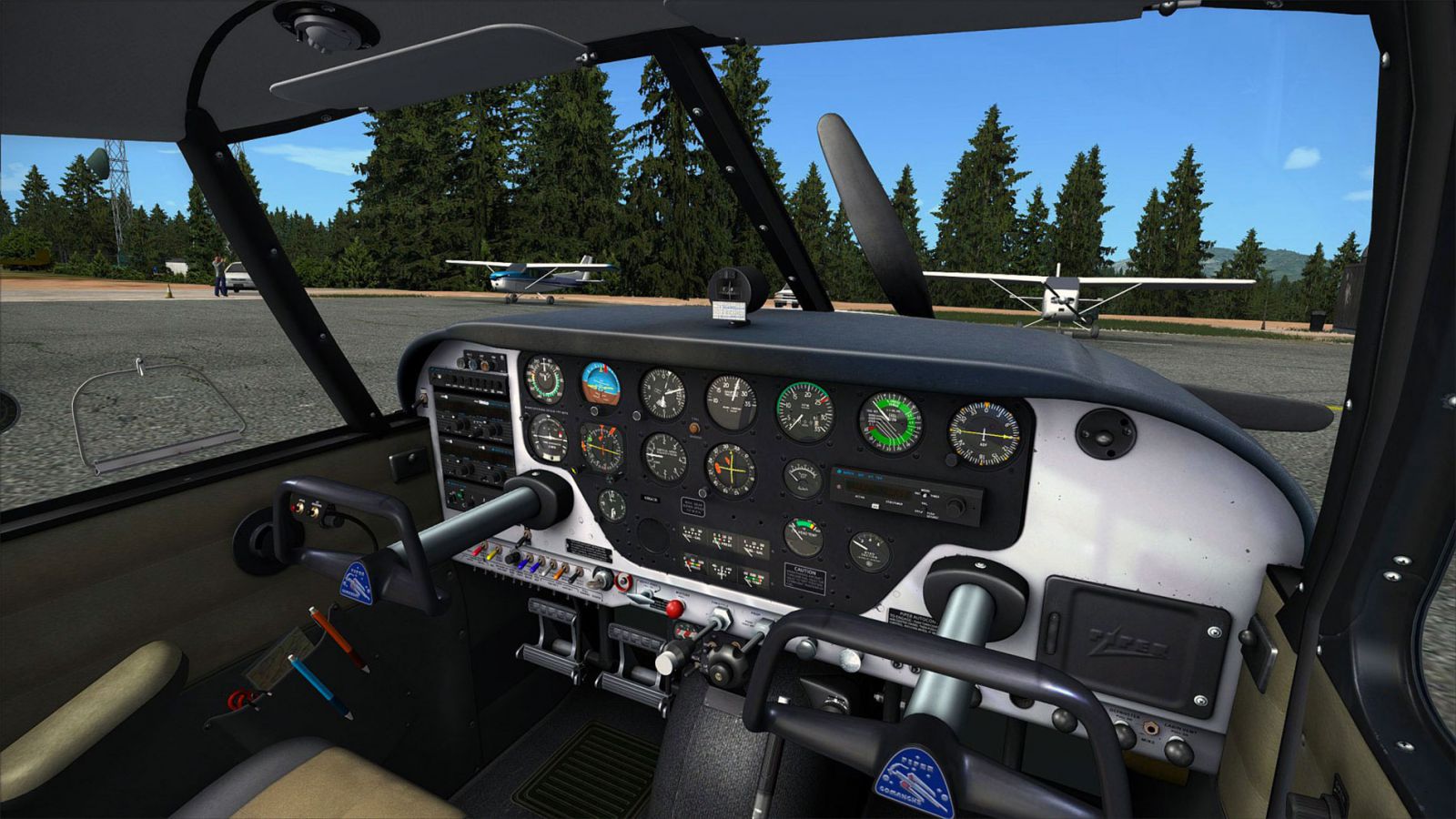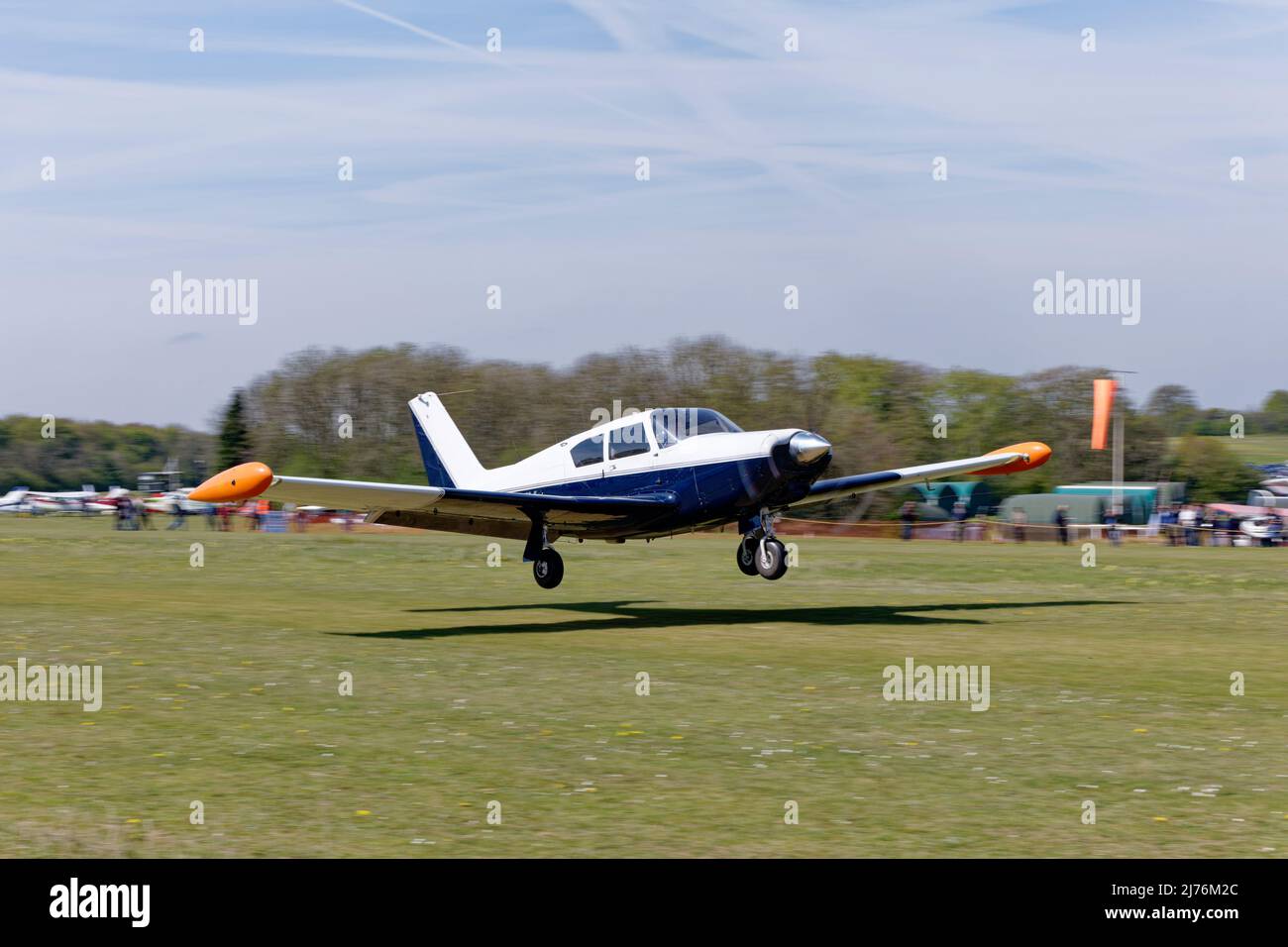Pa24 Aircraft - The aircraft is a low-wing cantilever cabin monoplane with a T-tail configuration and a retractable tricycle undercarriage. It is intended to operate from short and rough runways and equipped with an improved wing design incorporated with a double-slotted flap to obtain the required performance.
It has a wingspan of 17 meters and a wing area of 30.91 square meters. The long-stroke trailing-arm suspension landing gear flattens out rough surfaces, the main wheels have an ample amount of pressure to avoid sinking in soft surfaces.
Pa24 Aircraft

The wing flaps protect the engines from loose debris since they are made of abradable material that can be replaced easily in case of damage in the field. Only the finest-quality materials have been used to create an interior that fits in perfectly with the latest standards of comfort and functionality.
Pc- Design
Every component is chosen to enhance the passenger experience: soft leathers and rare hardwood cabinetry full of exquisite details create a bespoke interior that reflects the meticulous purpose of the aircraft. The generously sized cabin, with its continuous flat floor, allows for an exceptional amount of headroom for both passengers and crew.
The PC-24 is the first business jet of Pilatus. Oscar Schwenk, chairman of Pilatus says the aircraft "combines the versatility of a turboprop with the cabin size of a medium-light jet and the performance of a light jet".
On May 11, 2015, P01 took its 55-minute maiden flight from Buochs Airport, Switzerland. The event marked the beginning of test flights for the two-year certification campaign of the aircraft. On November 16, 2015, P02 conducted its first flight for a total of 82 minutes.
In March 2017, P03 took its maiden flight. The three PC-24 prototypes set a record of flying 2205 hours on extreme environments including very hot temperatures, icing conditions, outside its service envelope, bird strikes, stress-strain tests, and noise tests.

Pc- Production And Development
In 2007, Pilatus Aircraft, a Swiss aerospace company began the development of an aircraft that would have the overall ruggedness of the PC-12, and its ability to take-off and land on short runways with a better range and top speed.
Several production versions were designated as PA-24-180, and were powered by a Lycoming O-360-A1A engine rated at 180 horsepower. It was designed with a swept tail, an all-moving stabilator, and manually-actuated flaps. The normal fuel capacity of the variant was 60 US gallons.
The PA-24-180 had a cruise speed of 116 to 139 knots and a travel range of 700 nautical miles. 1,143 PA-24-180s were built in total. Just imagine: You've worked so hard for so long, and now it's time for a well-deserved rest.
Gather your family and friends together to enjoy a weekend. Carry all their belongings and just take off. With the PC-24's speed and range, you'll reach all your destinations in a breeze. Its incredibly slow approach speed and sophisticated braking/lift dump system reduce the landing distance to an absolute minimum, and keep every landing safe.
Pc- Cockpit And Cabin
The PC-24's superior runway performance enables you to operate from thousands of airstrips that the competition can only fly over. That's why we call the PC-24 a Super Versatile Jet: more runways, more space, more possibilities.
The PC-24's Advanced Cockpit Environment (ACE) sets the standard for high-tech simplicity. Pilatus ACE is so capable and offers such a wealth of functionality that in its most basic configuration it boasts the most intuitive and user-friendly cockpit concepts ever seen in business aviation.
Four 12-inch screens ensure that all relevant information is displayed in the right place and with no delay. The Inertial Reference System (IRS) guarantees excellent reliability and accuracy of altitude and navigation data. The Pilatus ACE™ also includes a Synthetic Vision System, Autothrottle, Graphical Flight Planning, Traffic Collision Avoidance System (TCAS II), and Localiser Performance with Vertical (LPV) guidance capability.
Hand in hand with Pilatus, BMW Designworks has created six stylish color lines for the PC-24, each one named after a well-known ski resort, like St. Moritz, Zermatt or Aspen. The various color worlds were inspired by the shades of nature found at each location.
With countless materials and colors available, each interior can be individually tailored to your wishes. The combination of the flexibility of a turboprop, the cabin dimension of a medium-light jet, and the exceptional performance of a light jet, the Pilatus PC-24 is a light business jet that clearly does not fit into any of the present classifications
of business jets. The PC-24 has been designated as the world's first super versatile jet. The aircraft was fitted with a three-bladed propeller and had a maximum fuel capacity of 100 to 130 US gallons. The PA-24-400 had 185 knots cruising speed and 194 knots top speed.
Although similar to the other versions of the PA-24, the 400 has a tougher and firmer structure, mainly in the tail. It was designed with an additional nose rib in the vertical stabilizer and in the all-flying tail.
In the last quarter of 2014, Pilatus signed an agreement with FlightSafety International for pilot and technician training in Dallas, Texas. In May 2017, series production has started and is in progress, as it prepares the first delivery to PlaneSense, the launch customer of PC-24.

In December 2017, eight aircraft were on the assembly line and twenty-three were intended to be delivered in 2018. On May 21, 2013, the PC-24 was launched at the European Business Aviation Convention and Exhibition in Geneva, Switzerland.
Three prototypes were built, each one of them serving its function. The P01 is for exploring the performance envelope of the type and was rolled out on August 1, 2014, P02 is primarily for testing the integration of avionics and autopilot system, and the P03 is to be the model of production aircraft that will integrate enhancements made
based on the development work completed with the other two prototypes. The PC-24's cabin volume tops business jets costing almost twice as much. The interior of the PC-24 has been designed from the outset for quick and easy reconfiguration – an option not found in many other business jets.
Each passenger seat features quick-change capability enabling its addition or removal in just a few minutes. The aft partition is movable so you can easily enlarge the passenger cabin or increase the luggage compartment volume for each and every flight.
Now let's look at the number of runways around the world that offer a length of at least 2,930 feet (893 m) but feature unpaved surfaces - like grass or gravel. The number is almost 20,000!
So with the PC-24, you will have access to almost 100% more airports around the world. That means you can fly closer to your final destination than with any other business jet. You'll be able to use smaller airports and avoid massive administrative procedures, and reduce ground transfer time to an absolute minimum.

The customizable cabin interiors have been designed by BMW Designworks. It has a cabin length of 7.01 meters, a width of 1.69 meters, and a height of 1.55 meters. It has a passenger door on the left, two emergency exits, and a cargo door on the rear left side.
The cabin can accommodate up to eleven passengers. There are around 10,650 airports in the world that you can access with an aircraft able to operate on runways with a length of 3,130 feet (954 m).
There are an additional 880 airports that become available when your aircraft needs only 2,930 feet (893 m). Of course, in both cases these runways will have to be paved. The PC-24 is simply unique. It's the only aircraft combining the versatility of a turboprop with the cabin size of a medium-light jet, and the performance of a light jet.
It's a plane that simply doesn't fit into any of the existing business jet categories. That's why we had to create a new one: the Super Versatile Jet (SVJ) category. The PC-24 has been engineered to be "off-road" compatible from the beginning.
Its outstanding short-field performance – even on unpaved runways – opens up an incredible level of mobility. In 1958, the second version designated as PA-24-250 was introduced. It was powered by a Lycoming O-540 engine with a maximum thrust of 250 horsepower.
The variant had a maximum cruise speed of 160 knots. Early PA-25-250s were the same PA-24-180; built with manually-actuated flaps and had a fuel capacity of 60 US gallons. In 1961, newer versions were equipped with auxiliary fuel tanks.

In 1962, electrically-operated flaps were developed. All aircraft built by Pilatus are certified to be flown by just one pilot. The cockpit configuration is dynamic and innovative. It features the Advanced Cockpit Environment (ACE) by Honeywell with the Primus Epic 2 integrated avionics system that helps the pilot with enhanced situational awareness, effective management of workload, safety systems, and modern navigation tools.
Demand for first-class ambulance aircraft continues to grow. The PC-24, the world's first and only Super Versatile Jet, is an ideal ambulance aircraft. Benefits include low operating costs and the ability to operate in and out of short and even unpaved surfaces.
On December 7, 2017, it was awarded the Federal Aviation Administration (FAA) and European Aviation Safety Agency (EASA) type certificate. In the last quarter of 2018, it received its certification to operate on dry sand and gravel.
Since 2019, the Royal Flying Doctor Service of Australia (RFDS) has used the PC-24 for medevac missions. On June 27, 2019, it received its certification from Transport Canada. In February 2020, the PC-24 completed its rough-field certification, including landings on grass, wet earth, and snow.
All Pilatus aircraft are certified for single-pilot operation. And the PC-24 is no exception to this rule. The cockpit layout is efficient and intuitive. From the comfort of his or her seat, the pilot finds an environment that has been designed specifically to reduce workload and improve safety while providing full situational awareness under all circumstances.
Simply put, the PC-24 is the perfect combination of single-pilot operational know-how, and state-of-the-art avionics technology. And of course the PC-24 can also be flown by two pilots. In 1964, Piper Aircraft introduced the PA-24-400. The version was produced between 1964 and 1966. It was powered by the Lycoming IO-720 engine rated at 400 horsepower.
The large-displacement, horizontally-opposed eight-cylinder piston engine was built specifically for the PA-24-400. The Piper PA-24 Comanche was designed and introduced by Piper Aircraft in 1958. Produced from 1957 to 1972, the Comanche is a single-engine low-wing civil utility aircraft with an all-metal and semi-monocoque construction.
It could accommodate four to six persons in flight and fitted with a tricycle retractable undercarriage.
piper pa 24 comanche specifications, piper pa 24 comanche, pa24 aircraft for sale, piper pa24 plane, pa 24 250, piper comanche pa24, comanche pa 24, piper comanche specs